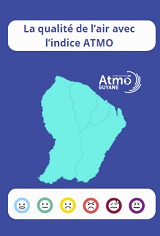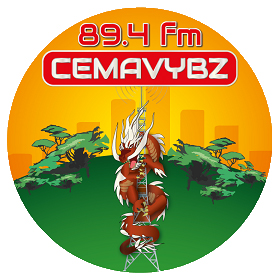Blada.com
vendredi 11 avril
Boîtes aux lettres
Courrier des lecteurs
Petites annonces
Emploi / Formation
Covoiturage
Infos citoyennes
Infos citoyennes
15/11/21
Prise en charge des AVC en Guyane : une thèse pour mieux comprendre
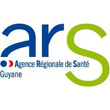
Le 25 octobre, Johanna Rhein a soutenu avec succès sa thèse de médecine. Elle rapporte les résultats d’une étude prospective des AVC à Cayenne. En comparant cent patients consécutifs admis pour un AVC au CHC avec 100 patients admis pour les mêmes raisons dans les unités neurovasculaires de Tours et Besançon, elle permet de comprendre la différence de typologie et de prise en charge entre la Guyane et deux villes moyennes de l’Hexagone. Un travail indispensable alors que mieux traiter les accidents vasculaires cérébraux figure parmi les priorités de santé publique à traiter en prévision du futur CHU de Guyane.
 Chaque année, la Guyane enregistre en moyenne 236 hospitalisations pour AVC pour 100 000 habitants. C’est 40 % de plus qu’au niveau national. Seule La Réunion fait davantage. Chez nous, l’accident vasculaire cérébral compte parmi les principales causes de décès chez les moins de 65 ans. Le rapport d’inspection sur la création du futur CHU de Guyane fixe la lutte contre les AVC parmi les priorités de santé publique des prochaines années. « Assurer la prise en charge des AVC thrombolysés sur les trois centre hospitalier » est un projet à réaliser à court terme, d’ici à fin 2022, pour ses auteurs. La thèse initiée par le Pr Bertrand de Toffol, chef de pôle cardio-vasculaire et métabolique à l’hôpital de Cayenne, financée par l’Agence régionale de santé (ARS) et soutenue avec succès par Johanna Rhein le 25 octobre, permet d’y voir plus clair.
Chaque année, la Guyane enregistre en moyenne 236 hospitalisations pour AVC pour 100 000 habitants. C’est 40 % de plus qu’au niveau national. Seule La Réunion fait davantage. Chez nous, l’accident vasculaire cérébral compte parmi les principales causes de décès chez les moins de 65 ans. Le rapport d’inspection sur la création du futur CHU de Guyane fixe la lutte contre les AVC parmi les priorités de santé publique des prochaines années. « Assurer la prise en charge des AVC thrombolysés sur les trois centre hospitalier » est un projet à réaliser à court terme, d’ici à fin 2022, pour ses auteurs. La thèse initiée par le Pr Bertrand de Toffol, chef de pôle cardio-vasculaire et métabolique à l’hôpital de Cayenne, financée par l’Agence régionale de santé (ARS) et soutenue avec succès par Johanna Rhein le 25 octobre, permet d’y voir plus clair.
Une étude pour comprendre la typologie des AVC en Guyane
« Je suis venu en mission en septembre 2017 à la demande de l’ARS de Guyane, rappelle le Pr de Toffol. En arrivant, j’avais dit que pour construire une unité neurovasculaire (UNV), il nous fallait des chiffres objectifs : quelle est la typologie des AVC en Guyane, quelle est leur prise en charge, quel est le taux de mortalité… » C’est ce à quoi s’est attelée la jeune interne, qui a effectué trois semestres en Guyane à partir de novembre 2018.
Pour ce faire, elle a comparé 100 patients consécutifs admis au centre hospitalier de Cayenne pour un AVC (entre le 4 mai 2019 et le 9 janvier 2020) avec 100 patients consécutifs admis dans les UNV de Tours (Indre-et-Loire) et Besançon (Doubs). Ces villes de tailles moyennes n’ont pas été choisies au hasard : le Pr de Toffol a longtemps travaillé dans la première ; la seconde apporte un soutien technique et médical à la Guyane depuis plusieurs années.
 En Guyane, un nombre élevé d’AVC à cause de l’hypertension et du diabète
En Guyane, un nombre élevé d’AVC à cause de l’hypertension et du diabète
Le nombre élevé d’AVC en Guyane s’explique par la forte prévalence des risques artériels. « La prévalence de l’hypertension artérielle à Cayenne est estimée à 40 % : 45 % chez les hommes, 37 % chez les femmes. En France, elle est de 30 %. La prévalence du diabète en Guyane est de 8 %, le double de la métropole », rappelle Johanna Rhein.
« A contrario, le taux de décès suite à un AVC est plus faible en Guyane qu’en métropole, l’âge moyen des patients concernés étant beaucoup plus précoce qu’en métropole, poursuit le rapport de l’Igas. Cependant ces affections peuvent entraîner des séquelles graves chez des patients plus jeunes, qui nécessitent ensuite une prise en charge sur le long terme. »
Des patients plus jeunes que dans l’Hexagone
Les recherches de Johanna Rhein confirment la jeunesse des patients victimes d’AVC en Guyane : ils avaient 62 ans en moyenne dans sa cohorte, contre 70 ans à Besançon et 69 ans à Tours ; 58 % avaient moins de 65 ans chez nous, contre 31 et 34 % dans les deux établissements de l’Hexagone. Dans les trois hôpitaux, on comptait deux tiers d’hommes pour un tiers de femmes. Parmi les 100 patients de Cayenne, la jeune femme a recensé deux fois plus de patients diabétiques et 50 % de patients souffrant d’hypertension en plus qu’à Tours et Besançon. Enfin, elle note que « les patients avaient un niveau de handicap avant AVC similaire, des AVC de sévérité similaire, et des niveaux de handicap similaires au moment de leur sortie d’hospitalisation. »
Une étude qui illustre les problématiques de la Guyane
Pour le Pr de Toffol, les AVC « illustrent toutes les problématiques de la Guyane : les facteurs de risque et les difficultés de prise en charge. » L’Igas constate que « même si les trois (hôpitaux) disposent du plateau d’imagerie nécessaire au diagnostic (scanner et IRM) et peuvent fonctionner H24, les retards de prise en charge de l’urgence restent fréquents ; ce qui s’expliquent aussi par un défaut d’alerte et par des délais pré-hospitaliers. » En clair, il se passe souvent trop de temps entre l’AVC et l’appel au Samu.
Des thrombolyses réalisées dans les trois hôpitaux grâce à la télémédecine
« La seule alternative thérapeutique est donc aujourd’hui la thrombolyse en urgence », poursuit le rapport. Ce geste est réalisé en télémédecine avec le CHU de Besançon. « La plateforme télé AVC, avec le CHU de Besançon (Doubs) est opérationnelle depuis 2017, et peut être activée avec les trois centres hospitaliers de Guyane, poursuit le rapport. A ce jour, 514 avis ont été rendus (environ 140 par an) et 56 thrombolyses réalisées (environ 18 par ans). » Donc quand un patient arrive à l’hôpital, « l’IRM part à Besançon qui donne les indications de traitement », détaille le Pr de Toffol. L’objectif désormais est de renforcer la prise en charge locale, avec notamment la création d’une unité neurovasculaire.
La création d’une unité neuro-vasculaire prévue dans le nouveau Projet Régional de Santé en cours de concertation
Le Projet Régional de Santé est en cours de mise à jour pour permettre le développement de nouvelles activités prévues par le projet CHRU. Les concertations vont se dérouler au cours des prochaines semaines. La mise à jour prévoit ainsi : « Des points clefs d’amélioration du parcours après un accident vasculaire cérébral réside dans le recours aux soins de suite et la prévention tertiaire. Il s’agit donc de développer les soins de suite et de réadaptation (SSR) avec mention principale pour les affections des systèmes nerveux, l’accès systématique à la consultation pluriprofessionnelle post-AVC dans chaque UNV. Pour ce faire, une unité neuro-vasculaire (UNV) et un SSR affections systèmes nerveux seront mis en place sur le territoire afin d’améliorer le parcours de soins et la prise en charge des patients victimes d’un AVC. »
Prendre en charge les AVC en Guyane d’ici fin 2022
Le rapport sur le CHU confirme la nécessité d’une « montée en charge progressive qui dépendra des recrutements et compétences médicales (…) La question des ressources humaines et des compétences est aujourd’hui un facteur limitant. L’objectif de rendre l’établissement autonome pour la prise en charge des AVC est programmée pour la fin 2022. La valence hospitalo-universitaire du chef de service (Bertrand de Toffol) sera un atout pour développer des partenariats RH, attirer des postes partagés et des internes inter-CHU notamment avec le CHU de Tours ou celui de Besançon (…) A plus long terme (…), l’accès à la thrombectomie sur le territoire pourra s’envisager. Cet accès thérapeutique nécessitera des équipements complémentaires et surtout la disponibilité de neuroradiologues interventionnels, spécialistes dont le GHT ne dispose pas à ce jour. »
Construire une culture et des pratiques communes dans les trois centres hospitaliers
Le Pr de Toffol espère créer cette UNV rapidement. L’hôpital de Cayenne compte déjà cinq praticiens hospitaliers en plus de lui, un médecin et deux internes, pour vingt lits de neurologie et deux lits de soins intensifs positionnés en réanimation. Un chef de clinique arrivera en mai 2022. Le Chog, où il se rend chaque mois pour des consultations, compte un praticien hospitalier. Il aimerait renforcer encore un peu cette équipe « pour organiser des gardes auxquelles participeraient les médecins de Kourou et Saint-Laurent du Maroni. Cela faciliterait le développement de prises en charge communes et d’une culture commune. »
SAMU, radiologie, réanimation : toute une filière à structurer
« La création de cette UNV aura des effets vertueux. Cela facilite la relation avec les autres médecins. Cela permettra de former le Samu, qui pourra mettre en relation la famille (du patient victime d’un AVC) et les neurologues de l’unité car il est très important d’avoir un maximum de renseignements le plus tôt possible, pour savoir s’il est éligible à un traitement immédiat. Avec une UNV enfin, les lits de soins intensifs pourront être positionnés directement dans l’unité (…) Pour avoir une bonne neurologie, il faut des médecins en nombre suffisant, ainsi qu’une bonne radiologie et une bonne réanimation, ce qui est le cas. Le projet de neurologie ne pourra pas se faire sans un projet de cardiologie. »
Des progrès encore nécessaires au plan du numérique
La principale limite aujourd’hui est technique, selon lui : « Le problème des transferts d'images entre les 3 hôpitaux est toujours pendant. Le paradoxe est que le CHC, le CHK et le Chog peuvent transférer les images en temps réel à Besançon depuis quatre ans mais pas entre eux. »
Un grand bravo à Johanna Rhein et à tous ses co-internes pour leurs travaux de thèse, qui nous aident à construire notre futur CHRU !
Cet article est issu de la Lettre pro de l’Agence régionale de santé. Vous pouvez vous y abonner en remplissant le formulaire suivant : https://forms.sbc28.com/5a8bed50b85b5350ef1cd117/t13M7zUZQi2XMq5E3DdnhQ/0WQoeDwjRXqJblCpKbLDzA/form.html
 On October 25, Johanna Rhein successfully defended her medical thesis. She reports the results of a prospective study of stroke in Cayenne. By comparing one hundred consecutive patients admitted for a stroke at the CHC with 100 patients admitted for the same reasons in the neurovascular units of Tours and Besançon, it allows us to understand the difference in typology and care between French Guiana and two medium-sized towns of the hexagon. An essential work while better treating strokes is one of the public health priorities to be addressed in anticipation of the future University Hospital of French Guiana.
On October 25, Johanna Rhein successfully defended her medical thesis. She reports the results of a prospective study of stroke in Cayenne. By comparing one hundred consecutive patients admitted for a stroke at the CHC with 100 patients admitted for the same reasons in the neurovascular units of Tours and Besançon, it allows us to understand the difference in typology and care between French Guiana and two medium-sized towns of the hexagon. An essential work while better treating strokes is one of the public health priorities to be addressed in anticipation of the future University Hospital of French Guiana.
 Each year, French Guiana records an average of 236 hospitalizations for stroke per 100,000 inhabitants. This is 40% more than at the national level. Only Reunion Island does more. In our country, stroke is one of the leading causes of death in people under 65. The inspection report on the creation of the future University Hospital of French Guiana sets the fight against stroke among the public health priorities for the coming years. "Ensuring the management of thrombolysed strokes in the three hospitals" is a project to be carried out in the short term, by the end of 2022, for its authors. The thesis initiated by Prof. Bertrand de Toffol, head of the cardiovascular and metabolic center at Cayenne hospital, funded by the Regional Health Agency (ARS) and successfully supported by Johanna Rhein on October 25, allows us to see more clearly.
Each year, French Guiana records an average of 236 hospitalizations for stroke per 100,000 inhabitants. This is 40% more than at the national level. Only Reunion Island does more. In our country, stroke is one of the leading causes of death in people under 65. The inspection report on the creation of the future University Hospital of French Guiana sets the fight against stroke among the public health priorities for the coming years. "Ensuring the management of thrombolysed strokes in the three hospitals" is a project to be carried out in the short term, by the end of 2022, for its authors. The thesis initiated by Prof. Bertrand de Toffol, head of the cardiovascular and metabolic center at Cayenne hospital, funded by the Regional Health Agency (ARS) and successfully supported by Johanna Rhein on October 25, allows us to see more clearly.
A study to understand the typology of stroke in French Guiana
"I came on a mission in September 2017 at the request of the French Guiana ARS," recalls Professor de Toffol. When I arrived, I said that in order to build a neurovascular unit (UNV), we needed objective figures: what is the typology of strokes in French Guiana, what is their treatment, what is the mortality rate… ”. This is what the young intern, who spent three semesters in French Guiana from November 2018, got down to.
To do this, it compared 100 consecutive patients admitted to the Cayenne hospital for a stroke (between May 4, 2019 and January 9, 2020) with 100 consecutive patients admitted to the UNV of Tours (Indre-et-Loire) and Besançon. (Doubs). These medium-sized towns were not chosen at random: Prof. de Toffol worked for a long time in the former; the second has been providing technical and medical support to French Guiana for several years.
 In French Guiana, a high number of strokes due to hypertension and diabetes
In French Guiana, a high number of strokes due to hypertension and diabetes
The high number of strokes in Guyana is explained by the high prevalence of arterial risks. “The prevalence of hypertension in Cayenne is estimated at 40%: 45% in men, 37% in women. In France, it is 30%. The prevalence of diabetes in Guyana is 8%, double that of the mainland, ”recalls Johanna Rhein.
"On the other hand, the death rate following a stroke is lower in Guyana than in mainland France, the average age of the patients concerned being much earlier than in mainland France," continues the Igas report. However, these conditions can cause serious sequelae in younger patients, which then require long-term management. "
Patients younger than in France
Johanna Rhein's research confirms the youth of stroke patients in Guyana: they were 62 on average in her cohort, against 70 in Besançon and 69 in Tours; 58% were under 65 with us, against 31 and 34% in the two establishments in France. In the three hospitals, there were two-thirds of men and one-third of women. Among the 100 patients in Cayenne, the young woman identified twice as many diabetic patients and 50% more patients with hypertension than in Tours and Besançon. Finally, she notes that “patients had a similar level of pre-stroke disability, strokes of similar severity, and similar levels of disability upon discharge from hospital. "
A study that illustrates the problems of French Guiana
For Prof. de Toffol, strokes “illustrate all the issues in Guyana: the risk factors and the difficulties in taking charge of them. "The Igas notes that" even if the three (hospitals) have the imaging platform necessary for diagnosis (scanner and MRI) and can operate 24 hours a day, delays in emergency management remain frequent; which can also be explained by a failure to alert and by pre-hospital delays. In short, there is often too much time between the stroke and the call to the emergency room.
Thrombolysis performed in the three hospitals using telemedicine
"The only therapeutic alternative today is therefore emergency thrombolysis," the report continues. This gesture is carried out in telemedicine with the CHU of Besançon. “The TV AVC platform, with the Besançon University Hospital (Doubs) has been operational since 2017, and can be activated with the three hospitals in French Guiana, the report continues. To date, 514 opinions have been issued (approximately 140 per year) and 56 thrombolyses performed (approximately 18 per year). "So when a patient arrives at the hospital," the MRI leaves for Besançon which gives the indications for treatment, "explains Professor de Toffol. The goal now is to strengthen local care, including the creation of a neurovascular unit.
The creation of a neurovascular unit provided for in the new Regional Health Project currently under consultation
The Regional Health Project is being updated to allow the development of new activities planned by the CHRU project. Consultations will take place over the next few weeks. The update provides: “Key points for improving the pathway after a stroke are the use of follow-up care and tertiary prevention. It is therefore a question of developing follow-up and rehabilitation care (SRH) with main mention for affections of the nervous systems, systematic access to post-stroke multi-professional consultation in each UNV. To do this, a neuro-vascular unit (UNV) and an SSR for nervous system disorders will be set up in the territory in order to improve the care pathway and the management of patients suffering from a stroke. "
Support stroke in French Guiana by the end of 2022
The CHU report confirms the need for "a gradual increase which will depend on recruitments and medical skills (...) The issue of human resources and skills is a limiting factor today. The objective of making the establishment autonomous for the management of strokes is scheduled for the end of 2022. The university hospital valence of the department head (Bertrand de Toffol) will be an asset for developing HR partnerships, attracting shared positions. and inter-CHU interns, in particular with the Tours or Besançon CHU (…) In the longer term (…), access to thrombectomy in the territory may be considered. This therapeutic access will require additional equipment and above all the availability of interventional neuroradiologists, specialists that the GHT does not currently have. "
Building a culture and common practices in the three hospitals
Professor de Toffol hopes to create this UNV quickly. Cayenne Hospital already has five hospital practitioners in addition to him, a doctor and two interns, for twenty neurology beds and two intensive care beds positioned in intensive care. A head of clinic will arrive in May 2022. Le Chog, where he goes every month for consultations, has a hospital practitioner. He would like to further strengthen this team “to organize guards in which the doctors from Kourou and Saint-Laurent du Maroni would participate. This would facilitate the development of common care and a common culture. "
SAMU, radiology, resuscitation: a whole sector to be structured
“The creation of this UNV will have virtuous effects. This facilitates the relationship with other doctors. This will make it possible to train the Samu, who will be able to put in contact the family (of the patient suffering from a stroke) and the neurologists of the unit because it is very important to have as much information as possible as soon as possible, to know how 'he is eligible for immediate treatment. Finally, with a UNV, the intensive care beds can be positioned directly in the unit (...) To have good neurology, you need a sufficient number of doctors, as well as good radiology and good resuscitation, which is the key. case. The neurology project cannot be done without a cardiology project. "
Digital progress still needed
The main limitation today is technical, according to him: “The problem of image transfers between the 3 hospitals is still pending. The paradox is that the CHC, the CHK and the Chog have been able to transfer images in real time to Besançon for four years but not between them. "
Congratulations to Johanna Rhein and all her co-interns for their thesis work, which helps us build our future CHRU!
This article is from the Professional Letter of the Regional Health Agency. You can subscribe to it by filling out the following form: https://forms.sbc28.com/5a8bed50b85b5350ef1cd117/t13M7zUZQi2XMq5E3DdnhQ/0WQoeDwjRXqJblCpKbLDzA/form.html
Raccourcis

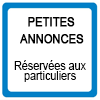
passer une petite annonce
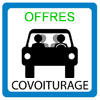
passer une annonce de covoiturage
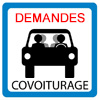
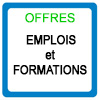
passer une annonce d’emploi
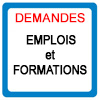
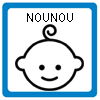
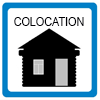
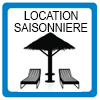
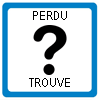
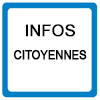
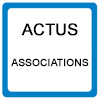
associations, postez vos actualités
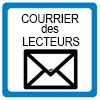
participez au courrier des lecteurs
La Guyane c’est ici
La qualité de l’Air avec
ATMO
Photothèque

Lancements 2022
Vol 259 Ariane 5



